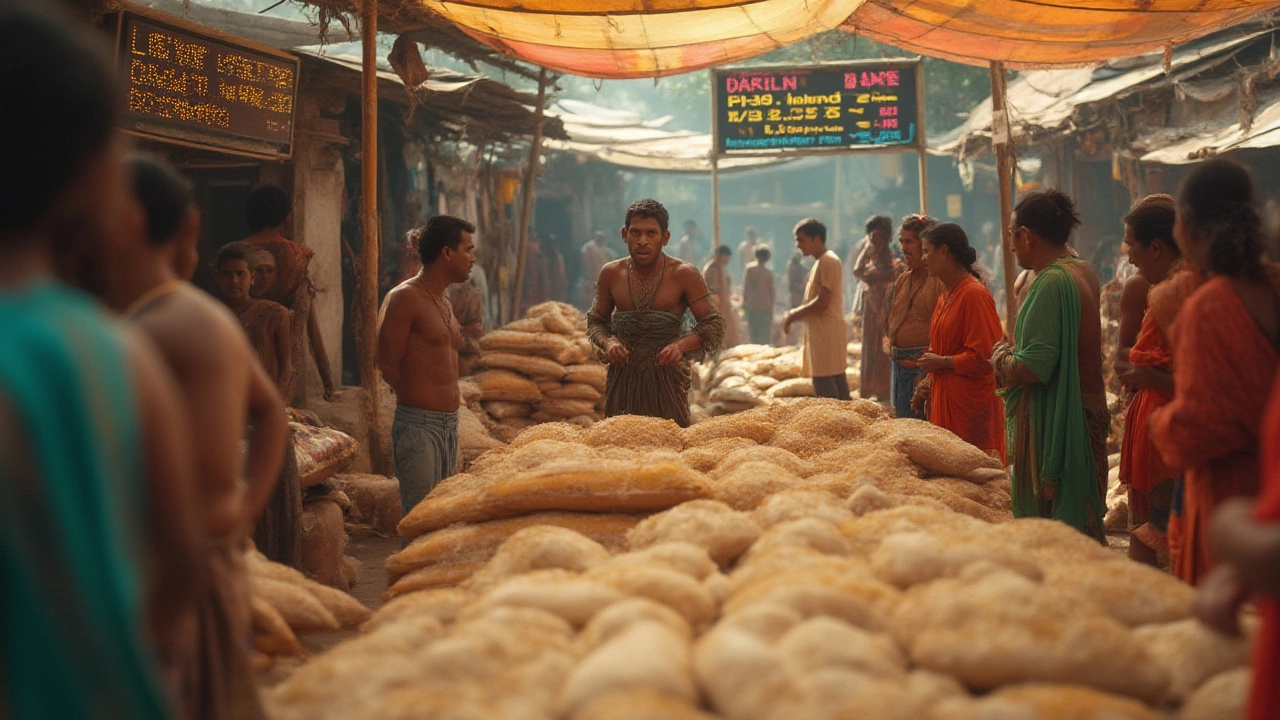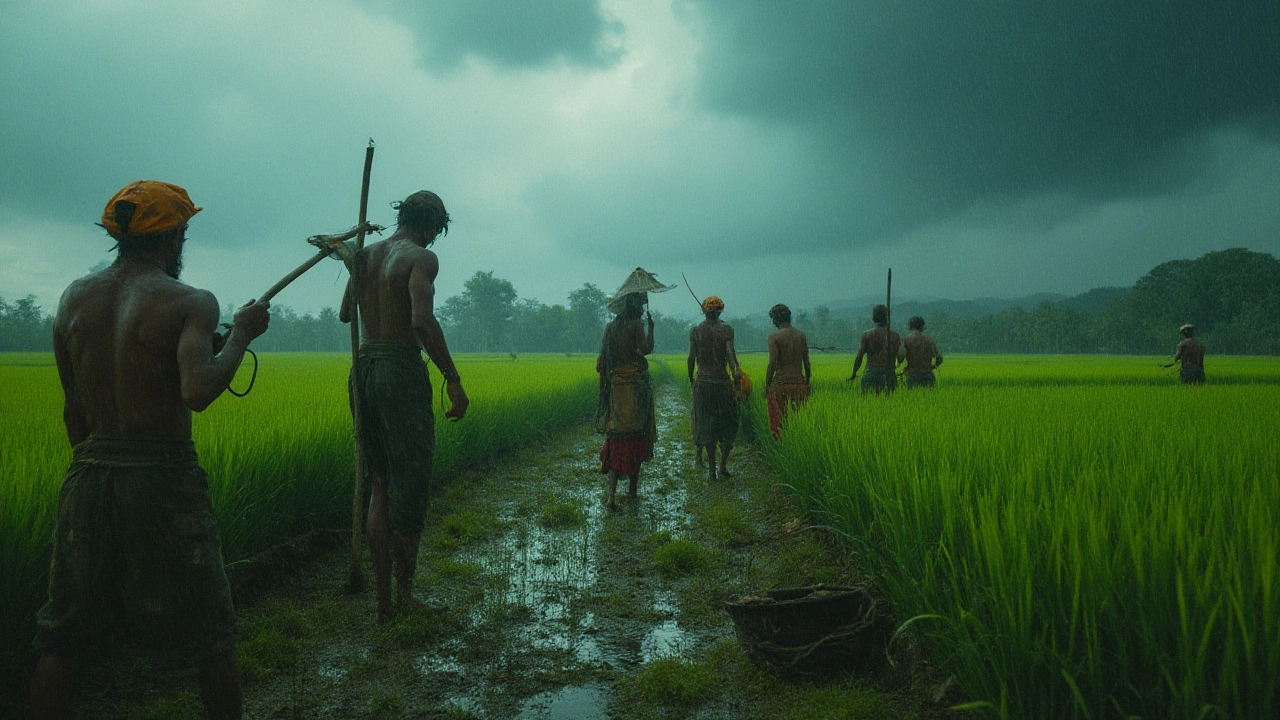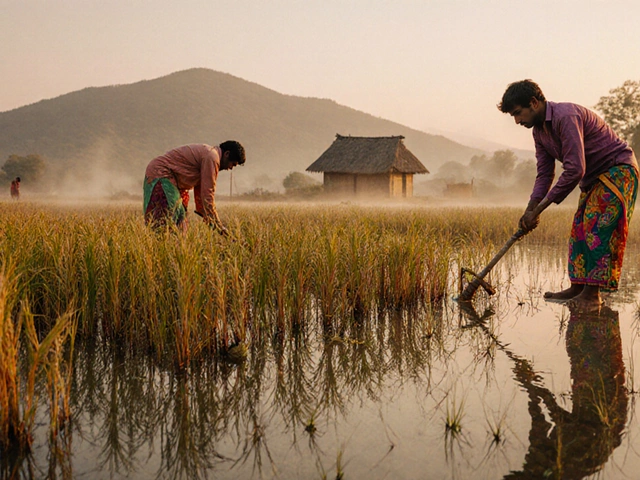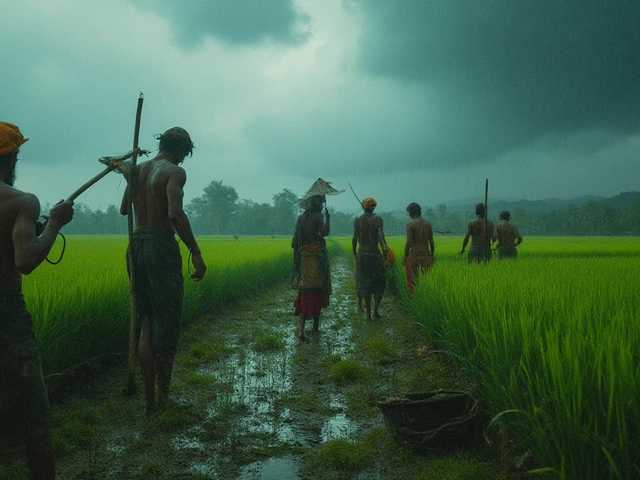Imagine your whole year's income sitting in a muddy field, soaked by rain that won't stop, or burning up under a sun so fierce it cracks the earth open. That's the constant gamble many rice business owners face, even before a single grain is harvested. Some folks in the business say if you can't sleep at night, you're probably doing rice right. It's not for the faint of heart. Yet rice is a global staple, feeding over half the planet. That demand draws in thousands of hopefuls every year, ready to try their luck from the paddies of Asia to the southern states in the US. But nobody warns you that sometimes the rice just doesn’t come up, or when it does, the price drops so low you wonder why you bothered in the first place.
Nature's Curveballs: Weather and Disease
When you’re growing rice, you’re always at the mercy of the weather. Floods in Bangladesh can wipe out an entire region’s crop overnight, and then, in the same year, droughts hit Thailand and push their yields way down. Scientists from IRRI (International Rice Research Institute) found that unpredictable swings—El Niño and La Niña—can mean million-ton swings in Asia’s harvests. This isn’t just bad luck—it’s a serious business risk affecting farmers from Vietnam’s Mekong Delta to the rice plains in Arkansas. The 2020 monsoon in India, for instance, dumped 10% more rain than usual. Farms in Bihar and Uttar Pradesh reeled from the floods. Others, just a little further away, saw bumper crops and tanking prices.
Flooding isn’t even the worst of it. You’ve also got to keep one eye out for drought, which slowly strangles the plants over weeks or even months. During the 2015 drought in California, the state’s rice output dropped nearly 30%—which meant less rice to sell, and higher prices that never seemed to make it back to the actual farmer. Extreme weather is rarely predictable, but there’s not much you can do when Mother Nature decides to go wild. Insurance helps a bit, but it never covers everything.
Then there are the diseases and pests. Rice blast, for example, sounds like a video game but can wipe out fields in days. The fungus Magnaporthe oryzae, which causes the blast, is so stubborn that annual global losses are estimated to feed over 60 million people each year. Farmers have to constantly shuffle between different paddle-tested and approved seed varieties, hoping they’ll outpace whatever strain of fungus is coming next. Then, just when you think you’ve got disease managed, brown planthoppers show up. In Vietnam in 2007, these little bugs devoured or damaged about 370,000 hectares! It cost farmers millions and forced the government to restrict planting rice for a season.
The thing is: while new resistant seed varieties and clever crop rotations can reduce risk, nothing is foolproof. Your best defense is often connecting with other farmers, sharing local warnings about new outbreaks, and not putting all your eggs (or grains) in one basket—diversify what you plant, and don’t rely on just a single crop or rice type. It pays to get involved in farmer cooperatives or online groups where early warnings can reach you fast.

Cash Flow Crunches and Price Swings
If you think the rice business is as simple as planting and selling, that’d be lovely—but money troubles lurk at every stage. You have upfront costs: seeds, fertilizer, machinery, fuel, land prep, workers, water fees. Sometimes you need a hefty loan just to get the fields ready. Imagine taking out a bank loan in February, only to watch prices drop by harvest time in September. It happens all the time. The FAO reports global rice prices swing within a 10-15% range each year, and that's considered stable by industry standards! The worst part? Middlemen and buyers often wait until you’re desperate to move rice and then push the price even lower.
If you’re a small farmer, selling straight to market is rarely an option. You’re forced to accept the price you’re offered. In 2021, during COVID’s supply chain chaos, Vietnam saw rice prices spike—but by the time many farmers got their crops in the market, prices had already dropped back down. Larger producers, with storage or export options, fared better.
So, how do you shield yourself from these cash crunches? Savvy farmers look for forward contracts—agreeing on a price with a buyer at the start of the season. It’s a gamble, sure, but it takes out some of the guesswork. Others join cooperatives that pool rice from dozens of small farms, letting them bargain for better deals. If you’ve got the resources, investing in a simple warehouse or drying facility to store your crop gives you more leverage; you don’t have to sell the minute the harvest is over. Just keep in mind, storage costs can eat up your gains quickly if you’re not careful.
Here’s a simple table showing recent average price swings in major rice producer countries over the last five years:
| Country | Lowest Farm Price/ton | Highest Farm Price/ton | Year Range |
|---|---|---|---|
| India | £180 | £275 | 2020-2024 |
| Thailand | £240 | £375 | 2020-2024 |
| Vietnam | £210 | £320 | 2020-2024 |
| USA | £290 | £410 | 2020-2024 |
Notice that even a £50 swing per ton can mean the difference between a profit and a painful loss if you’re betting your livelihood on a few fields.

The Hidden Hurdles: Politics, Trade, and Reputation
Growing and harvesting your rice is just the start. Exporting can be a minefield of paperwork, politics, and sudden policy shifts. In 2023, India shocked global markets by banning the export of certain rice types, to keep domestic prices down. Exporters who’d already promised shipments abroad faced losses in the millions. Bangladesh, on the receiving end, scrambled for alternatives, pushing up prices worldwide. If your business is built around exports, changes in government policy, tariffs, or import limits can bring it to a grinding halt overnight. There’s just no way to predict when a politician will decide rice is too cheap or too scarce to let out of the country.
It’s not just the paperwork. Quality standards can trip you up as well. The EU, China, and even the US have strict controls—residues, pests, even the percentage of broken grains allowed. Getting hit with a “Rejected Cargo” label can mean weeks of wrangling and possible financial ruin, especially for smaller producers. Remember the scandal in 2017 when traces of a banned fungicide sent hundreds of tonnes of rice stuck at ports from Liverpool to Hamburg. Exporters paid hefty fines and shipments were destroyed.
Reputation matters. If your rice is known for stones, pests, or too much moisture, buyers quickly turn to someone else. Social media can blow up problems in minutes—a viral video of maggoty rice in a single warehouse led to cancelled contracts in Nigeria back in 2022. So, quality control is not optional. Most successful exporters use grading machines, regular lab tests, and independent audits. Is that pricey? You bet, but it’s far cheaper than losing an entire season’s orders.
Here are a few tips traders swear by:
- Keep meticulous records: Seed source, chemical applications, fertilizer, and harvest dates—all could be requested by buyers or customs.
- Keep an eye on your rice in storage; temperature swings and humidity can cause spoilage way faster than you might think.
- Network with buyers directly. Loyalty and trust go a long way—many longtime deals are still sealed with a handshake before the paperwork.
- Check trade news weekly. Governments sometimes change regulations with zero notice.
- Invest in quality control even before buyers demand it—random tests create confidence.
Diversification is your best friend in this environment. Some farmers switch a portion of their fields to vegetables, beans, or even fish farming, especially where water from rice paddies can support more than one crop. Others build direct-to-consumer businesses, milling rice and selling under their own labels to local shops—cutting out uncertain buyers or exporters.
The big secret? There’s never been a “safe” year or a completely predictable profit in the rice business. Every harvest is a mix of hope, skill, hustle, and weather luck. The ones who last aren’t the biggest risk-takers—they’re the ones who plan for the worst, spread their risks, and never stop learning from last year’s mistakes. The rice business is tough as old boots, but for those who manage the risks, there’s always another season and another chance.



